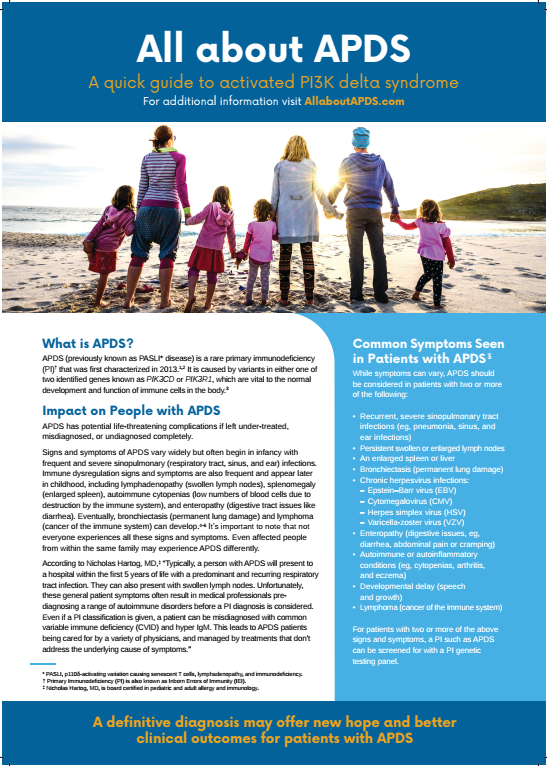
Symptoms combined with blood tests that identify changes in B and T cells should prompt suspicion of a primary immunodeficiency, such as APDS.
APDS can be definitively diagnosed by a genetic test.
Some individuals may be misdiagnosed with other primary immunodeficiencies such as Common Variable Immune Deficiency (CVID) or Hyper IgM syndromes.
Individuals whose main symptoms are low levels of blood cells, swollen lymph nodes, an enlarged spleen or liver, or lymphoma, may get a diagnosis of blood disorders such as Autoimmune Lymphoproliferative Syndrome (ALPS). These patients may be treated by doctors who do not suspect an underlying primary immunodeficiency, further delaying diagnosis.
Symptoms combined with blood tests that identify changes in B and T cells should prompt suspicion of a primary immunodeficiency like APDS.
It is recommended that all family members of people who have been positively diagnosed with APDS also be tested.

APDS is rare and not all doctors will have cared for someone with this condition. Download our two-page All about APDS Quick Guide and share with your doctor.
The brochure includes the signs and symptoms of APDS, how to test for APDS, and how your APDS may be managed.
APDS is rare and not all doctors will have cared for someone with this condition.
You are about to leave the allaboutapds.ca website.